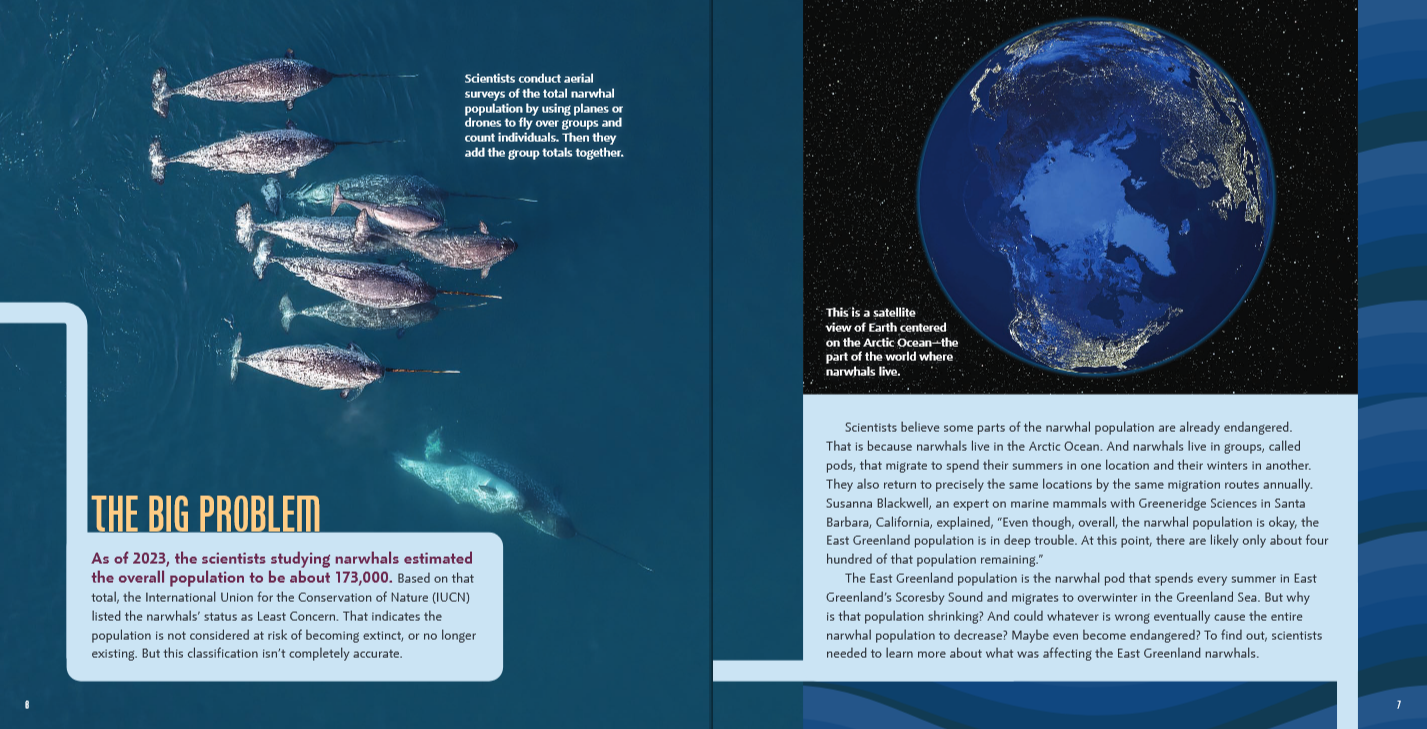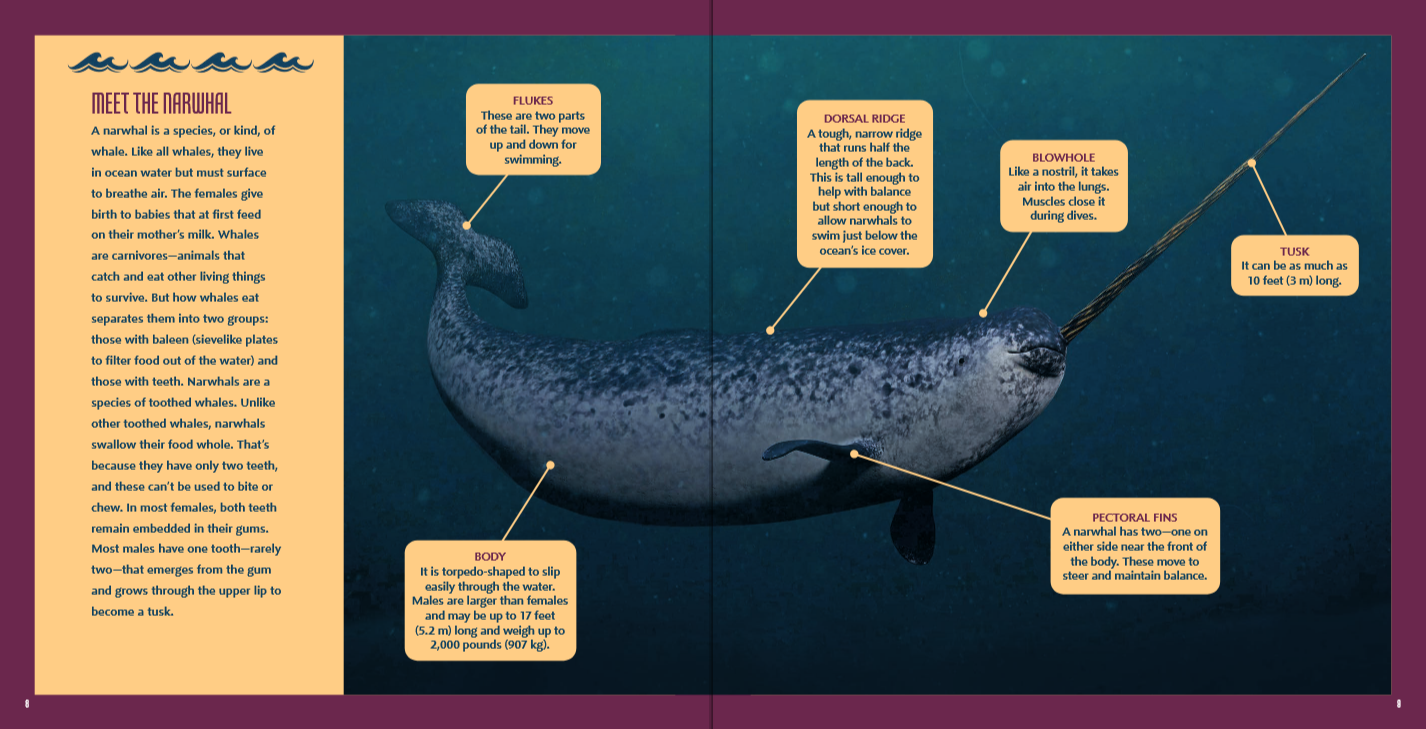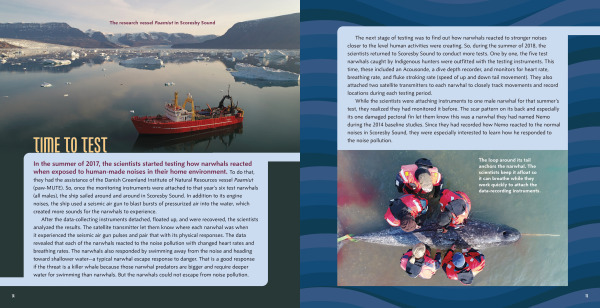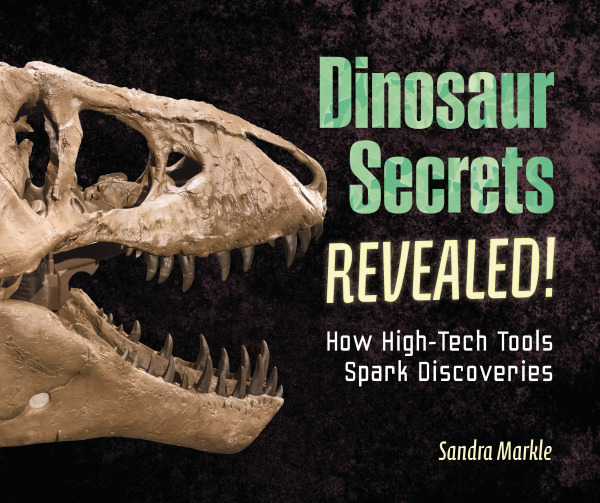Sandra Markle
The Great Narwhal Rescue

Saving the Arctic Ocean’s Narwhals
From the Series Sandra Markle’s Science Discoveries
With their long tusks, narwhals are unique whales that live in the Arctic Ocean.
But as climate change causes global temperatures to rise, less and less sea ice is covering the Arctic Ocean each year. Narwhals are left vulnerable without the ice, which historically provided them with safe areas to roam out of reach of their natural predators, killer whales. And humans are taking advantage of the clearer water, searching and drilling for oil and hauling cargo. So as Arctic sea ice shrinks, a new challenge emerges: noise pollution from human activity. The thrum of engines and other man-made sounds threaten narwhals ability to locate food, communicate with other narwhals, and use echolocation to navigate while migrating.
How can people reduce noise pollution in the Arctic Ocean to help them? Follow along as scientists study the effects of noise pollution on narwhals and work to ensure they have a hope-filled future.
Millbrook Press
Non-fiction Picture Book
Age 9+
40 pp
hc | 248 x 248 mm
Publication: April 2025
Author: Sandra Markle
All rights available, excl. Chinese (simpl. & compl.), Italian, Japanese, Korean, Portuguese, Spanish, Turkish
- Features a unique and mysterious species
- Up-to-date conservation information from scientists working to protect narwhals in the Arctic Ocean
- Provides information about how climate change has opened the Arctic Ocean to cargo shipping and oil drilling and how these activities are impacting wildlife there
Awards



“Another cogently explained example of environmental work from a master nonfiction writer.”—Kirkus Review, 23 December 2024
“Illustrated with color photos of narwhals and scientists who study them, this informative book is a worthwhile addition to Markle’s well-regarded series.”—Booklist, 19 February 2025
“Markle effectively translates complex topics, such as echolocation, Arctic migration patterns, and ecological disruption, into age-relevant language. Vivid photographs, maps, diagrams, and firsthand quotations from experts in the field add authenticity and depth. . . Perfect for interdisciplinary instruction in supporting science, literacy, and environmental stewardship and great for in-depth nonfiction reading and practice.”—School Library Journal, 22 May 2025
In the same series



